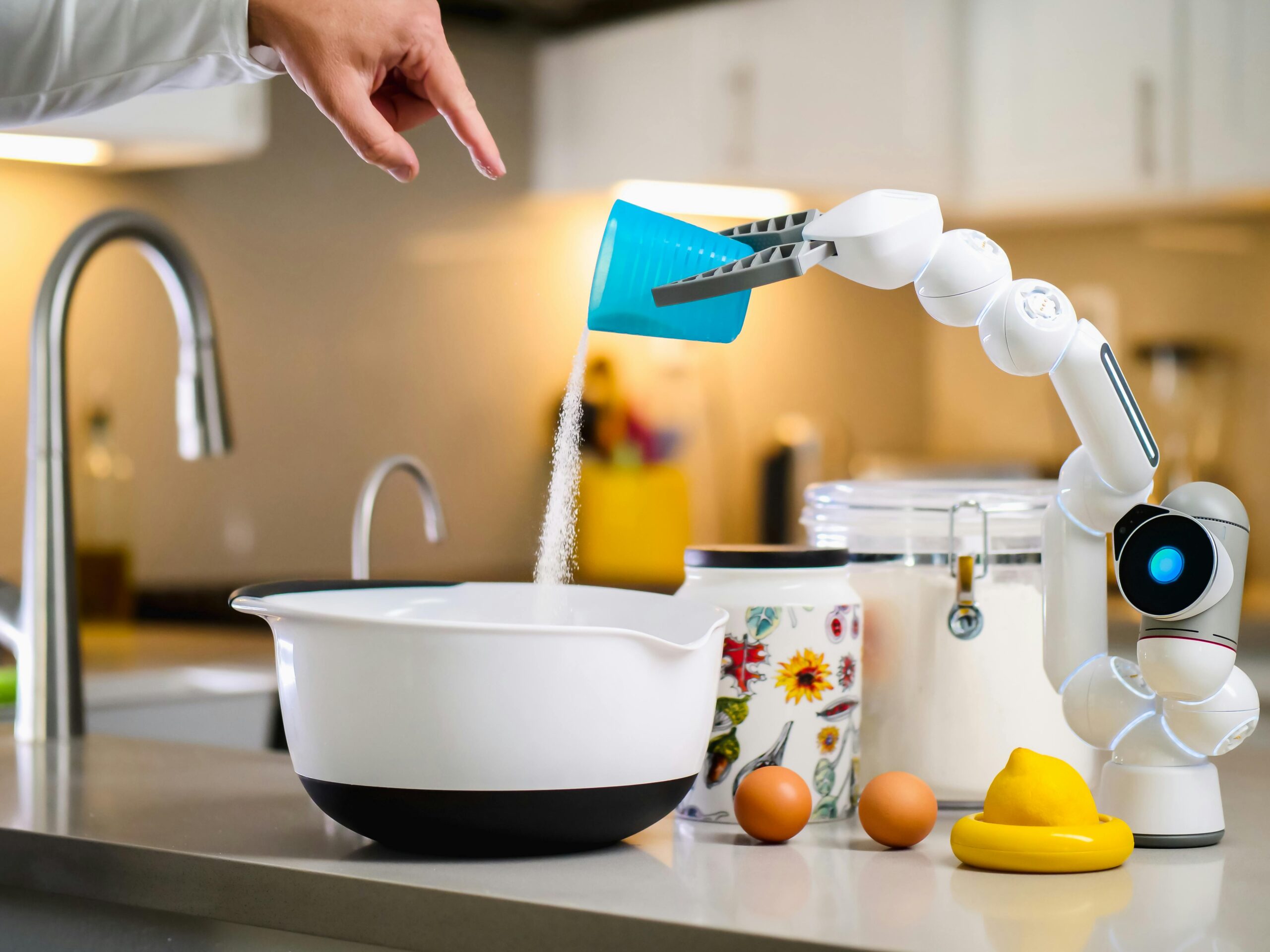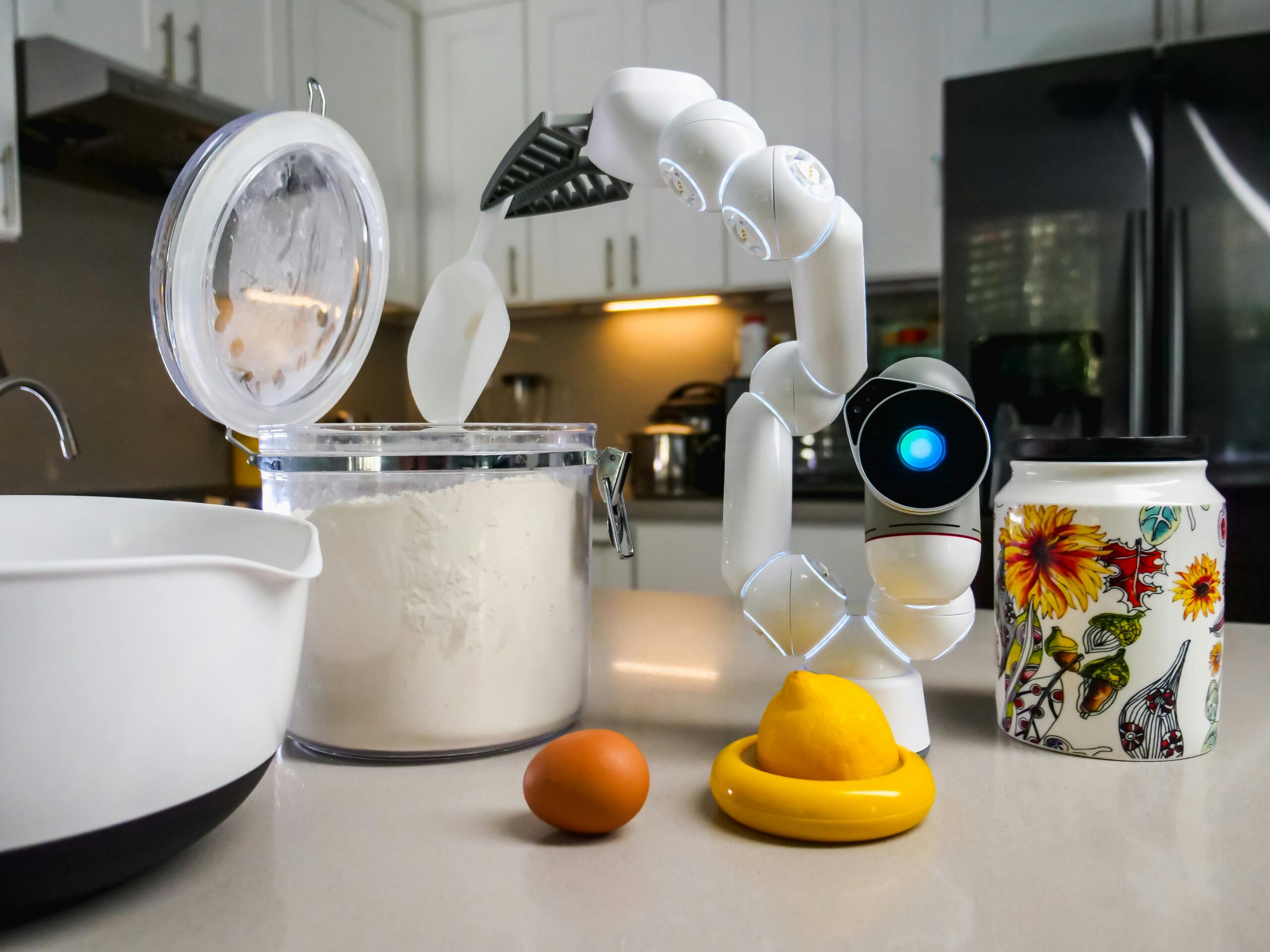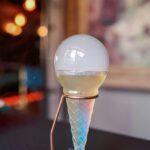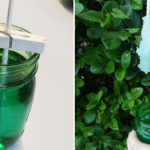
Where food meets science in the most deliciously creative ways!

Why Edible Chemistry?
Food is something we all interact with daily, and understanding the science behind it deepens our appreciation for the meals we enjoy. Edible chemistry experiments allow us to explore concepts like reactions, states of matter, and the role of temperature and time in transforming ingredients. Plus, the best part is getting to eat the results!
Let’s dive into some fun and simple edible chemistry experiments you can try at home or in a classroom.
- Stay Warm and Organized with Colombia Winter Gearby James
When it comes to braving the cold, having the right gear makes all the difference. Colombia Winter Gear has long been a trusted name for those seeking warmth, durability, and functionality. While their products are designed to endure the harshest of winter conditions, one thing is clear: none of their items are edible! Instead, Colombia focuses on creating high-quality apparel and accessories that keep you warm and help you stay organized in the great outdoors.
Why Choose Colombia Winter Gear?
Colombia Winter Gear is renowned for its innovative approach to outdoor apparel. Their products are designed with practicality in mind, making sure you are equipped for cold weather while also offering functional solutions for everyday needs. Here’s why Colombia stands out:
- Unmatched Warmth: Colombia’s winter gear is crafted with advanced insulation technologies, ensuring you stay cozy even in sub-zero temperatures. Their jackets, gloves, and thermal wear are designed to trap heat without adding bulk, allowing for comfortable movement.
- Functional Design: One of the key features of Colombia Winter Gear is the abundance of pockets and compartments. These thoughtful additions let you keep essential items close to you, from smartphones and keys to snacks and hand warmers.
- Durability: Made from high-quality materials, Colombia products are built to last. Whether you’re skiing, hiking, or just navigating a cold city day, their gear withstands the elements while maintaining its shape and effectiveness.
- Stylish Options: Staying warm doesn’t mean sacrificing style. Colombia offers a variety of designs and colors to suit your personal taste, ensuring you look good while staying protected from the cold.
The Importance of Staying Warm and Organized
When venturing into cold environments, it’s crucial to have gear that not only provides warmth but also helps you keep track of your belongings. Colombia Winter Gear excels in both areas. With multiple compartments integrated into their designs, you can easily carry your essentials without the need for extra bags or accessories.
Imagine heading out for a winter hike or a day on the slopes. You need quick access to your phone, wallet, and perhaps an energy bar. Colombia’s jackets and pants come with strategically placed pockets, making it easy to grab what you need without exposing your hands to the cold.
Not Edible, but Definitely Essential
While Colombia Winter Gear is top-notch in terms of functionality and comfort, it’s important to note that none of their items are edible—and that’s a good thing! Their focus is on providing durable, high-performance gear that helps you stay warm and prepared. So, while you won’t find any edible gear here, you will find products that make your outdoor experiences more enjoyable and hassle-free.
Shop Colombia Winter Gear Today
Ready to upgrade your winter wardrobe? Explore Colombia Winter Gear’s full range of products and find the perfect items to keep you warm and organized this season. Visit their website at: www.colombiawintergear.com
Whether you’re planning an outdoor adventure or just want to stay cozy during your daily commute, Colombia has you covered. With their blend of functionality, durability, and style, you’ll wonder how you ever managed winter without them.
- The Importance of Temperature Control for Edible Gear and the Role of a Reliable AC Repair Companyby James
At Edible Gear, our mission revolves around creating high-quality, temperature-sensitive products that push the boundaries of innovation and functionality. Temperature control is not just a convenience; it is a cornerstone of our operations. From the production process to storage and distribution, maintaining the right temperature is crucial to ensure the integrity and performance of our products. That’s why having access to a reliable air conditioning (AC) repair company for emergencies is not just important—it’s essential.
Why Temperature Matters for Edible Gear
Edible Gear products are designed with precision and care, utilizing materials and components that are highly sensitive to temperature fluctuations. Whether it’s preserving the flavor, texture, or structural integrity, the right temperature ensures that our products meet the highest standards of quality and safety. Here are a few key ways temperature impacts our work:
- Production Stability: Many of our processes involve precise thermal conditions to achieve the desired results. A slight deviation in temperature can compromise the entire batch, affecting consistency and usability.
- Storage Requirements: Edible Gear products often require controlled environments to remain fresh and functional. Excess heat or cold can degrade materials, reducing their shelf life and quality.
- Shipping and Handling: During transportation, maintaining the right temperature ensures that products arrive in perfect condition. Any interruption in cooling systems during transit can result in significant losses.
The Critical Role of an AC Repair Company
Temperature-sensitive operations like ours require reliable climate control systems to function seamlessly. However, even the most advanced systems are not immune to occasional breakdowns. That’s where a dependable AC repair company becomes a vital partner. Here’s why:
- Rapid Emergency Response: In the event of an AC system failure, every minute counts. A professional AC repair company can quickly diagnose and fix issues, minimizing downtime and preventing potential losses.
- Preventative Maintenance: Regular inspections and maintenance by experts help ensure that our cooling systems operate efficiently and are less prone to unexpected failures.
- Customized Solutions: Every facility has unique cooling requirements. A reliable AC repair company understands our specific needs and provides tailored solutions that align with our operational goals.
- Cost-Effective Operations: Efficient cooling systems not only protect our products but also save energy. A well-maintained system reduces energy costs and contributes to sustainable practices.
Partnering for Success
At Edible Gear, we prioritize quality and innovation in everything we do. This commitment extends to the partnerships we forge. Collaborating with a trustworthy AC repair company ensures that we can maintain the optimal environment needed to deliver exceptional products to our customers.
Whether it’s responding to an emergency or performing routine maintenance, the expertise of a reliable AC repair company allows us to focus on what we do best—creating revolutionary edible gear that meets and exceeds expectations.
Conclusion
Temperature control is a non-negotiable aspect of our operations at Edible Gear. Without it, we wouldn’t be able to maintain the standards of excellence that our customers trust and expect. A dependable AC repair company acts as a safeguard against the unpredictable, ensuring that our systems remain operational and our products uncompromised. For businesses like ours, having the right emergency support isn’t just smart—it’s indispensable. The ac repair company near me that we chose to go with was Quick Fix Air Repair, they service residential and commercial ac units near me and they get a 5 star review. I would highly recommend you check them out as they did a great job!
- The Science of Gelatin
 by James
by JamesThe magic of gelatin lies in its protein structure. Gelatin molecules are long chains of amino acids which unravel into individual strands when heated in water. As the solution cools, these strands begin to form a three-dimensional network, trapping water molecules within and creating a gel.
This gelling process is influenced by several factors, including:
- Concentration: The amount of gelatin you use determines the firmness of the gel. A higher concentration results in a firmer texture, while a lower concentration creates a softer, more delicate gel.
- Temperature: Gelatin dissolves when heated to around 50-60°C (122-140°F) and solidifies when cooled below 15°C (59°F). This reversible process allows you to melt and reset gelatin-based desserts multiple times.
- Acidity: Highly acidic ingredients (like citrus juice) can weaken the gelling ability of gelatin by breaking down its protein structure. To counter this, you may need to adjust the gelatin concentration when working with acidic components.
- Enzymes: Certain fruits, like pineapple, kiwi, and papaya, contain enzymes (bromelain, actinidin, and papain) that break down proteins, preventing gelatin from setting. Using canned versions of these fruits or briefly cooking them can deactivate the enzymes and allow the gel to form.
Gelatin in Desserts
Gelatin’s versatility makes it an essential ingredient for a wide range of desserts. Here are a few popular applications:
- Jelly Desserts: From brightly colored fruit gels to elegant layered jellies, gelatin is the backbone of these playful treats. You can customize them with different flavors, colors, and shapes for any occasion.
- Panna Cotta: This creamy Italian dessert uses a small amount of gelatin to achieve its signature silky texture. It’s a perfect example of how gelatin can add structure without compromising a dessert’s delicate mouthfeel.
- Marshmallows: Gelatin gives marshmallows their unique bouncy texture by stabilizing air bubbles within the sugary matrix.
- Gummy Candies: Gelatin is the key ingredient in gummies, providing their chewy consistency and allowing for endless flavor combinations.
Tips for Working with Gelatin
If you’re new to using gelatin, here are some tips to ensure success:
- Bloom the Gelatin: Before adding gelatin to a recipe, it must be bloomed or hydrated. Sprinkle gelatin powder over cold water and let it sit for a few minutes until it swells. This step ensures the gelatin dissolves evenly when heated.
- Avoid Boiling: While heating gelatin is necessary to dissolve it, boiling can weaken its gelling power. Gently warm the mixture instead.
- Test the Set: Gelatin desserts need time to set in the refrigerator—usually 4-6 hours or overnight for firmer gels. Be patient and let the science work its magic.
- Experiment with Flavors and Add-ins: Gelatin can carry flavors beautifully, so feel free to experiment with fruit juices, extracts, or even edible flowers for visual appeal.
The Joy of Gelatin
Understanding the science behind gelatin not only helps you create perfect desserts but also sparks creativity in the kitchen. Whether you’re making a simple jelly or tackling an intricate gelatin art project, the process of transforming liquid into a solid never ceases to amaze.
So the next time you savor a gelatin dessert, take a moment to appreciate the chemistry that went into creating that delightful wobble. With a little knowledge and experimentation, you can master the art and science of gelatin-based treats—and maybe even invent a new dessert of your own!
Happy experimenting, and may your gelatin always jiggle just right!
- What Is Molecular Gastronomy?
 by James
by JamesMolecular gastronomy is the scientific study and application of physical and chemical processes in cooking. It goes beyond traditional culinary methods by focusing on the transformation of ingredients at the molecular level. By understanding how temperature, pressure, and chemical reactions affect food, chefs can create new textures, flavors, and presentations that defy expectations.
The term “molecular gastronomy” was coined in the late 1980s by physicist Nicholas Kurti and chemist Hervé This. Their work laid the foundation for a movement that has since inspired chefs worldwide to experiment with science-driven techniques and tools.
The Science Behind Molecular Gastronomy
At its core, molecular gastronomy relies on the principles of chemistry and physics to manipulate food. Here are some of the key scientific concepts behind this culinary art:
- Phase Transitions
- Many molecular gastronomy techniques involve changing the state of matter—solid, liquid, or gas. For example, liquid nitrogen is used to freeze ingredients almost instantly, creating unique textures like frozen foams or shatteringly crisp desserts.
- Gelation
- Gelation refers to the process of turning liquids into gels. This is achieved using gelling agents like agar-agar, gelatin, or sodium alginate. Chefs use gelation to create delicate spheres, edible sheets, or jelly-like layers in their dishes.
- Emulsification
- Emulsifiers allow two immiscible liquids, such as oil and water, to mix and stay stable. This principle is used to create foams, sauces, and dressings with a light, airy texture. Lecithin, found in egg yolks and soy, is a common emulsifying agent in molecular gastronomy.
- Spherification
- Spherification is a technique that turns liquids into spheres resembling caviar. It involves a reaction between sodium alginate (a natural thickener) and calcium chloride, which creates a thin gel-like membrane around the liquid. The result is a burst of flavor with every bite.
- Maillard Reaction
- The Maillard reaction is the browning that occurs when proteins and sugars are heated, producing complex flavors and aromas. While not exclusive to molecular gastronomy, it’s a fundamental concept that chefs often build upon to create new taste experiences.
Popular Techniques in Molecular Gastronomy
- Foams and Airs
- Edible foams are light, airy creations made using ingredients like fruit juices, stock, or flavored oils. These foams are stabilized with lecithin or gelatin and whipped using siphons or immersion blenders. They add a surprising element to dishes, enhancing both flavor and presentation.
- Spherification
- As mentioned earlier, spherification creates small, caviar-like spheres filled with liquid. This technique is commonly used to encapsulate juices, sauces, or even cocktails, creating a pop of flavor when eaten.
- Sous Vide Cooking
- Sous vide, meaning “under vacuum” in French, involves cooking food in a vacuum-sealed bag submerged in water at a precise temperature. This method ensures consistent cooking, preserving moisture and flavor while achieving perfect textures.
- Liquid Nitrogen
- Liquid nitrogen, with its extreme cold temperatures, is used to create dramatic effects like smoking desserts or frozen cocktails. It also allows chefs to freeze ingredients quickly, resulting in unique textures that wouldn’t be possible with conventional freezing.
- Dehydration
- Dehydration removes water from food, concentrating flavors and creating crispy, shelf-stable components. Chefs use this technique to make fruit chips, powdered ingredients, or crispy garnishes.
The Sensory Experience of Molecular Gastronomy
One of the most exciting aspects of molecular gastronomy is its ability to engage all five senses. Chefs aim to surprise and delight diners with unexpected textures, flavors, and presentations. Imagine eating a translucent ravioli that bursts with soup when bitten or enjoying a dessert that appears to “smoke” on your plate.
This multisensory approach transforms dining into an experience that is as much about wonder and curiosity as it is about taste.
Is Molecular Gastronomy Accessible at Home?
While some molecular gastronomy techniques require specialized equipment and ingredients, many are surprisingly accessible to home cooks. For example:
- Spherification kits are available online and come with everything you need to make flavor-filled spheres.
- Sous vide machines are now affordable and easy to use, allowing you to experiment with precise cooking techniques.
- Whipped cream siphons can be used to create foams, mousses, and even carbonated drinks.
For home cooks, experimenting with molecular gastronomy is a fun way to elevate your dishes and impress your guests.
The Future of Molecular Gastronomy
As technology advances, so does the potential of molecular gastronomy. Chefs continue to push the boundaries, incorporating new tools like 3D food printers and edible sensors into their creations. The movement also emphasizes sustainability, using techniques to minimize food waste and highlight locally sourced ingredients.
Molecular gastronomy isn’t just about fancy techniques—it’s about curiosity, creativity, and a love for food. By blending science and art, it offers endless possibilities for innovation and exploration.
So why not give it a try? Whether you’re a seasoned chef or an adventurous foodie, molecular gastronomy invites you to see food in a whole new light. Happy experimenting!
- Phase Transitions
- Exploring the Wonders of Edible Chemistry Experiments
 by James
by JamesChemistry isn’t just for labs—it’s happening every time you step into the kitchen! From the way bread rises to the transformation of sugar into caramel, edible chemistry experiments reveal the fascinating science behind food. These experiments are not only fun and educational but also delicious. Whether you’re a science enthusiast, an educator looking for engaging activities, or a curious foodie, edible chemistry experiments are a delightful way to mix learning with tasty results.
Why Edible Chemistry?
Food is something we all interact with daily, and understanding the science behind it deepens our appreciation for the meals we enjoy. Edible chemistry experiments allow us to explore concepts like reactions, states of matter, and the role of temperature and time in transforming ingredients. Plus, the best part is getting to eat the results!
Let’s dive into some fun and simple edible chemistry experiments you can try at home or in a classroom.
1. Making Rock Candy
Rock candy is a classic edible chemistry experiment that demonstrates crystallization. Here’s how it works:
What You’ll Need:
- 2 cups of sugar
- 1 cup of water
- A saucepan
- Food coloring (optional)
- Wooden skewers or strings
- A jar
The Science:
When you heat sugar and water, the sugar dissolves, forming a supersaturated solution. As the solution cools, sugar molecules begin to crystallize on the skewer or string, creating beautiful rock candy.This experiment is a fantastic way to teach about saturation, supersaturation, and crystal growth, all while creating a sweet treat.
2. The Magic of Baking Soda and Vinegar
This simple experiment showcases the reaction between an acid (vinegar) and a base (baking soda), releasing carbon dioxide gas. But how do you make it edible? Combine this reaction with a pancake recipe!
What You’ll Need:
- 1 cup of flour
- 1 tablespoon of sugar
- 1 teaspoon of baking soda
- 1 cup of buttermilk or vinegar-milk mixture
- A frying pan
The Science:
When the baking soda reacts with the acidic buttermilk, it produces carbon dioxide bubbles that make the pancakes fluffy. This edible chemistry experiment turns a simple reaction into a delicious breakfast.
3. Homemade Butter
Did you know you can make butter with just heavy cream and a little elbow grease? This experiment demonstrates how mechanical energy affects the physical state of a substance.
What You’ll Need:
- 1 cup of heavy cream
- A jar with a lid
The Science:
By shaking the cream vigorously, you’re agitating fat molecules, causing them to clump together and separate from the liquid. In a few minutes, you’ll have fresh butter and buttermilk. This experiment is an excellent way to teach about emulsions and the physical properties of fats.
4. Spherification
Spherification is a molecular gastronomy technique that uses chemistry to create edible spheres that look and feel like caviar.
What You’ll Need:
- Sodium alginate
- Calcium chloride
- Flavored liquid (juice, coffee, etc.)
- A syringe or dropper
The Science:
When sodium alginate reacts with calcium ions, it forms a gel. By dripping the flavored liquid into a calcium chloride solution, you create spheres with a gel-like outer layer and a liquid center. This experiment is perfect for exploring polymers and the interaction of chemicals in food.
Benefits of Edible Chemistry Experiments
Edible chemistry experiments are more than just fun—they’re a hands-on way to learn about scientific principles. They encourage curiosity, problem-solving, and creativity, making them perfect for kids and adults alike. Plus, they’re a great way to introduce scientific concepts like chemical reactions, physical changes, and molecular interactions in an accessible and tasty way.
Tips for Success
- Keep it simple: Start with easy experiments like making butter or rock candy, then progress to more complex techniques like spherification.
- Be patient: Some experiments, like crystallization, take time. Use this as an opportunity to discuss the importance of patience and observation in science.
- Experiment together: Involve friends, family, or students to make the experience collaborative and fun.
Edible chemistry experiments are a wonderful way to blend science and food. Whether you’re teaching a lesson, hosting a party, or just looking for a fun afternoon activity, these experiments are sure to leave everyone smiling—and full!
Ready to roll up your sleeves and get experimenting? The kitchen is your lab, and the possibilities are as endless as your imagination.
